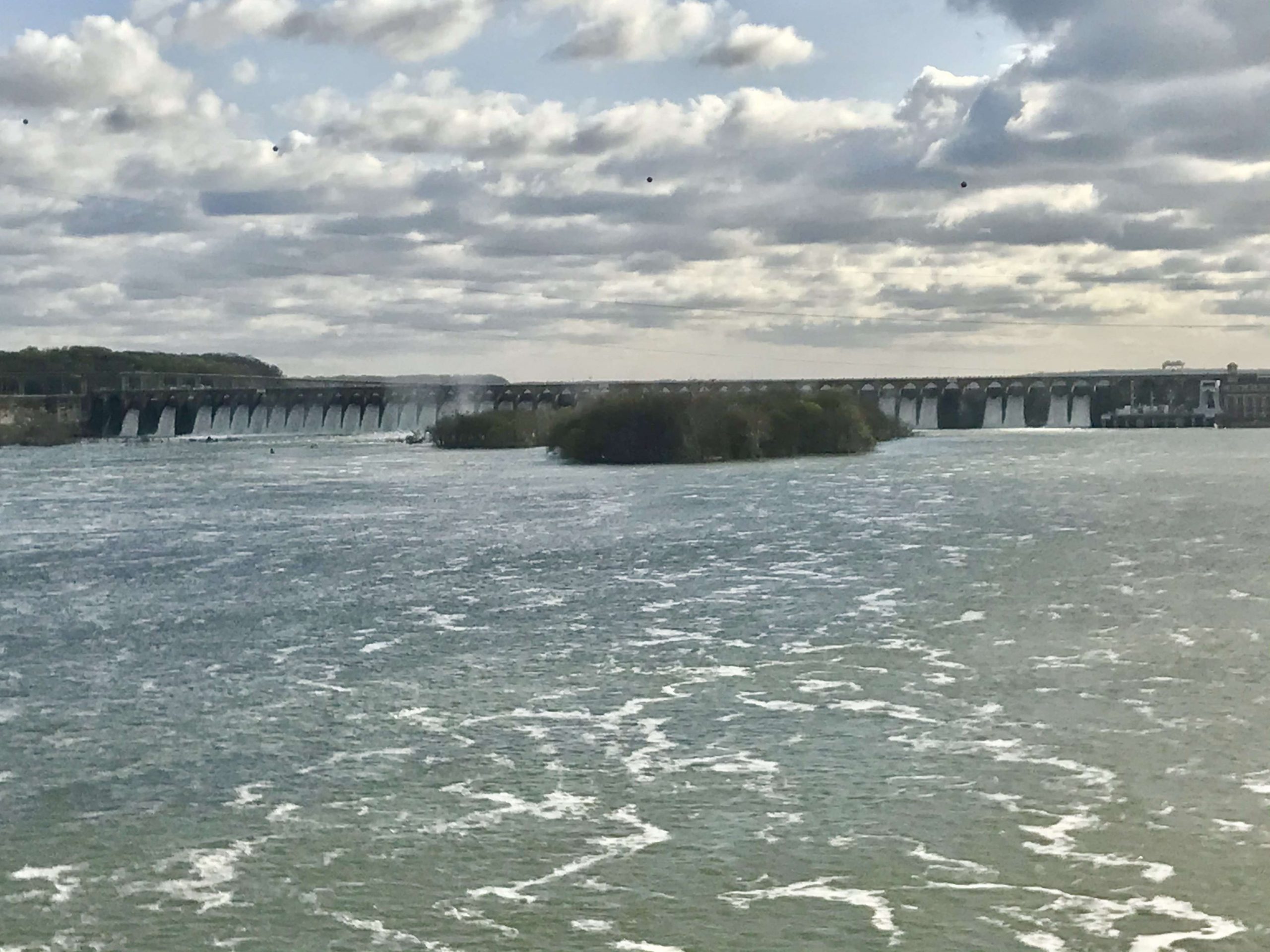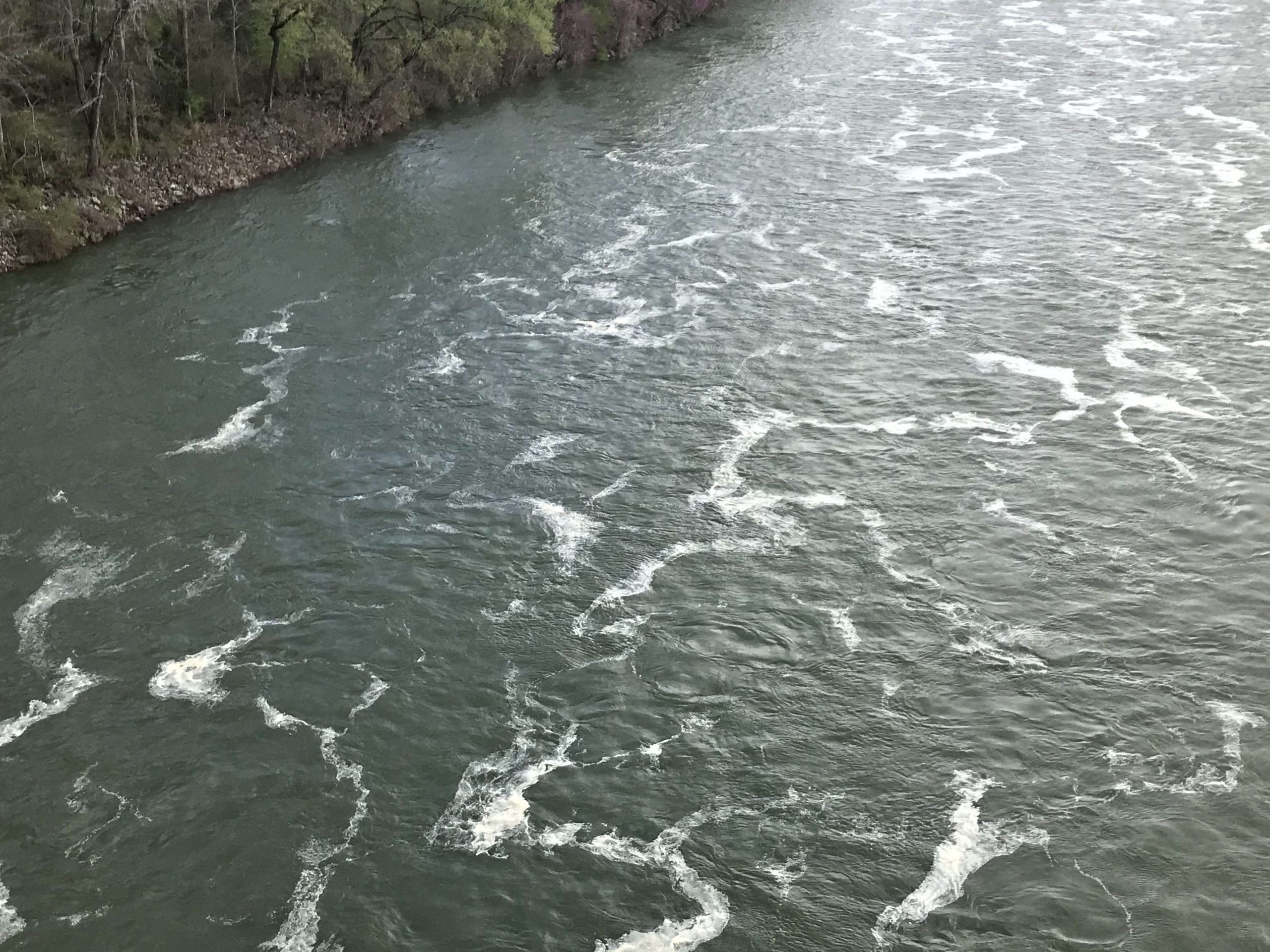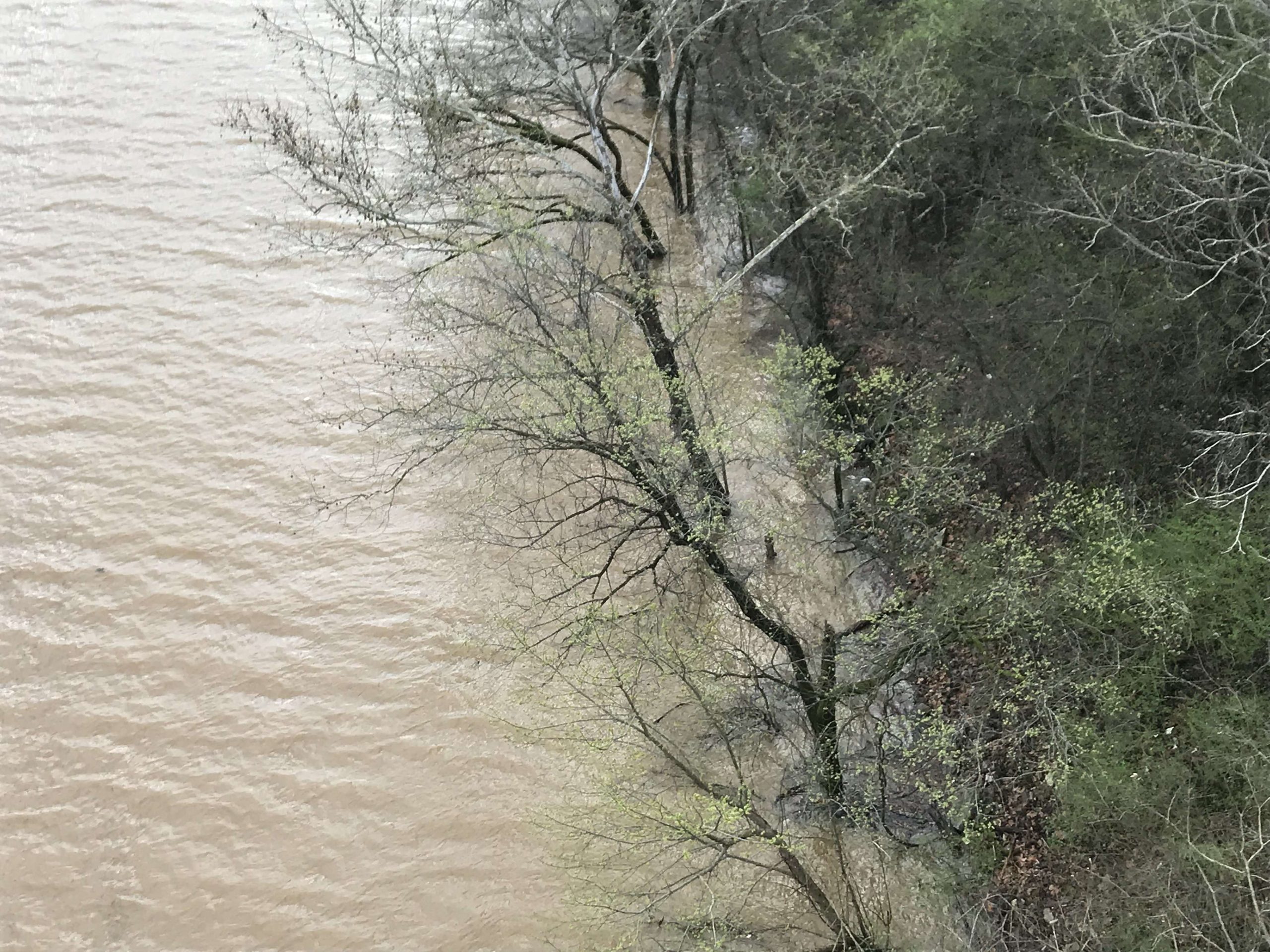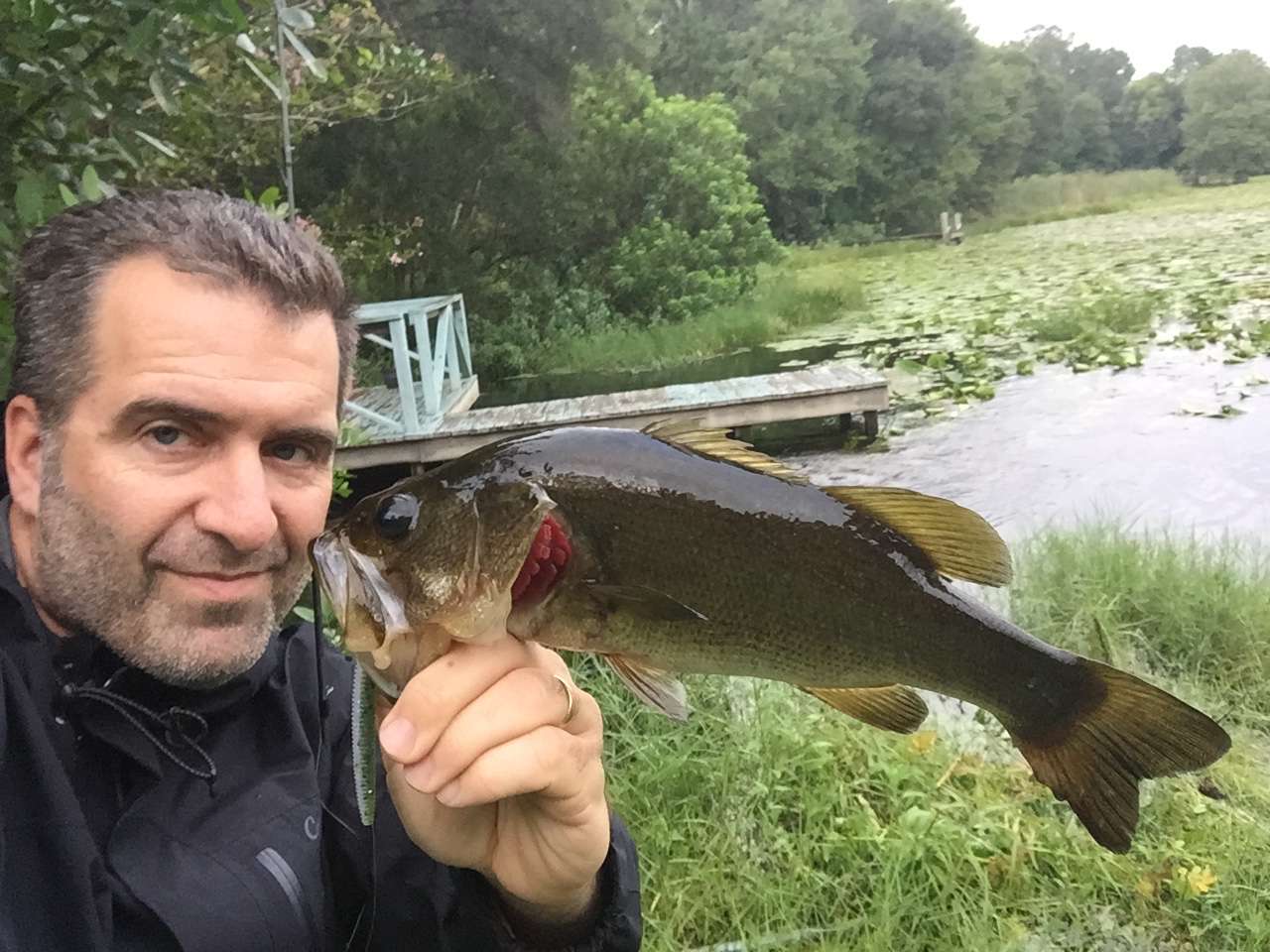
Chris Zaldain was not expecting to walk the dogs this morning, but his choice of venues bespoke the give-and-take scenario that had him and 99 other anglers in a holding pattern for the Guaranteed Rate Bassmaster Elite at Pickwick Lake.
Competition on this Tennessee River reservoir was originally scheduled for today through Sunday but extreme current levels caused by Wednesday’s fierce storm system, plus a hazardous wind forecast prompted B.A.S.S. officials to postpone the 4-day event’s start until Friday.
Zaldain took advantage of the downtime to multi-task during a half-hour stroll on the Singing River Bridge (SR 157) pedestrian walkway. Downstream from Wilson Dam’s surging flood gates, this protected vantage point offered a front-row view of the massive volume of water rushing into Pickwick.

Having traveled with Nebo the rescue dog for the past six years, Zaldain and his wife, (Basspro.com Bassmaster Opens pro) Trait recently added Belgian Malinois pup, Micci. This morning’s walk along the fenced-over path served two important missions.
“Micci’s 5 months old and this is her first trip experiencing the fishing life and I was kind of breaking her in and training her over the river,” Zaldain said. “It was a nice little walk where I could see exactly what the current levels were doing.”
Notably, Zaldain’s efforts to acclimate Micci to a broad array of sensory inputs parallels the task that he and his fellow competitors must undertake this week.
Water woes

According to the National Weather Service, Pickwick will surpass flood level of 18 feet and reach 21.1 feet by Friday. The water will start receding slowly and fall below flood stage by Monday afternoon.
Tennessee River Authority data supports this outlook. Today, Wilson Dam’s average hourly outflow will be 179,530 cubic feet per second (CFS), with that number increasing to 208,260 CFS by Saturday. At Pickwick’s lower end, its namesake dam is scheduled to release an hourly average of 147,083 CFS today and increase that flow to 200,945 by Saturday.
For anglers, this means muddy, fluctuating water with a huge level of current moving through the system. That’s pretty much the recipe for day-today, if not hour-by-hour changes.
Some of this can only be determined from the water, but a handful of predictable points merit inclusion:
Rise & Fall: Zaldain makes his home in Fort Worth, Texas, but he grew up fishing the California Delta’s tidal waters. Mastering daily ebb and flow taught him lessons applicable to this week’s event.
“When the river was low, all the water got sucked out of the big flats and the fish were relating to ditches and remaining current breaks because they had nowhere else to go,” Zaldain said. “In practice, I had some good success with smallmouth and largemouth, just fishing top-to-bottom on main river breaks.
“Now, you add all this current and (approximately) three feet of water and the fish are able to roam back onto the flats; they’re not really concentrated on the main river. This definitely took away the current breaks I was targeting, so I will not get bit in the places where I got bit in practice.”
Conversely, Zaldain plans to treat the rising water like an incoming tide.
“You’re constantly having to adjust (by thinking) ‘I got bit on this little current break here, but they can’t move far because the current restricts them,’” he said. “With another three feet of water over them, they have to reposition. Sometimes, they’ll just move up, as in further back.
“Just like tidal waters, sometimes, it’s just a mental chess game of figuring out how the high water affects them. These fish are mean and healthy right now; they’re still biting. You just have to relocate them.”
Playing field reduced: Despite Pickwick’s size (52.7 miles dam-to-dam), Jason Christie said he expected seasonal patterns to find the lake fishing small. Spawning waves are not likely this week, so the fish are mostly transitioning into prespawn staging zones.
“I think the biggest thing is it’s going to take away a lot of fishing area,” Christie said. “There were a lot of areas with minimal current, but with the water coming up, it’s going to put a lot current in places where it hasn’t been.
“I think that’s going to make Pickwick fish smaller than what it was before all this happened.”
Cliff Pirch said that with fish getting close to spawn mode, many had been snooping out likely locations. Stability is a top priority and this week’s wild water has taken a lot of areas off the list.
“Now that the water’s coming up, (the TVA) is going to blow a whole bunch of water through the system and as that current rages over some of those little pockets, they’re no longer calm, protected areas,” he said. “This probably did some rearranging of how and where fish will be set up.”
Scott Canterbury said a major piece of the puzzle will be the Wilson Dam tailrace, where the combination of turbulence and submerged rocks often delivers huge results — like Davy Hite’s 2011 Pickwick victory. This week, however, may see too much of a good thing nix that option.
“The first two day of practice, we had hardly any current up there — 50,00-60,000 CFS, and then they opened the gates and now there will be (approximately) 200,000 cfs coming through the dam,” Canterbury said. “I don’t even know if it’s going to be safe enough to go up there anymore.”
Expanded Shallow Habitat: As Canterbury notes, rising water overtakes shoreline cover and brings more laydowns, logs and stumps into play. Lacking the warming trend and full moon phase that spurs spawning movement, it’s uncertain how much of a factor flooded wood may become. That being said, anything that breaks current is worth a look.
Pirch adds this: “As the water comes up, some of the creeks and flats will have more access, but whether they’ll load up with fish right away, it’s hard to say. Whether it happens in the next four days, or if it happens in a week, I really don’t know.”

Muddy matters: Zaldain notes that the early rains of Wednesday morning quickly turned creeks into muddy faucets. This turbidity will last throughout the event with visibility the obvious casualty.
“You may have to go to a bigger bait with more vibration,” Canterbury said. “I was catching them on a flat-sided crankbait and if the water is muddy where I’m fishing, that’ll be gone. I’ll have to go to a wider body crankbait that puts out a little more disturbance.”
Less is more: Even though Pickwick’s list of viable areas has shrunk, Zaldain said the fact that increased current repositions baitfish can create isolated theaters of tremendous potential.
“It provides a great opportunity for bass to ambush baitfish because all this water and current movement repositions everything. When it gets really turbulent and the baitfish get confused, it’s a great opportunity for big largemouth and smallmouth to feed on them.”
Christie agrees: “It’s going to stack the fish up, so when an angler does find them, he’s going to find a wad of them.”
Zaldain’s confident that Micci will soon be on her best behavior; but Pickwick — not so much. This week, the lake will be giving the orders and only those who learn to pick up on her cues and obey her instructions will reap the rewards. Those who don’t, may end up on time-out.
Pirch’s closing observation: “I think the key will be how fast we, as fishermen, adjust.”

